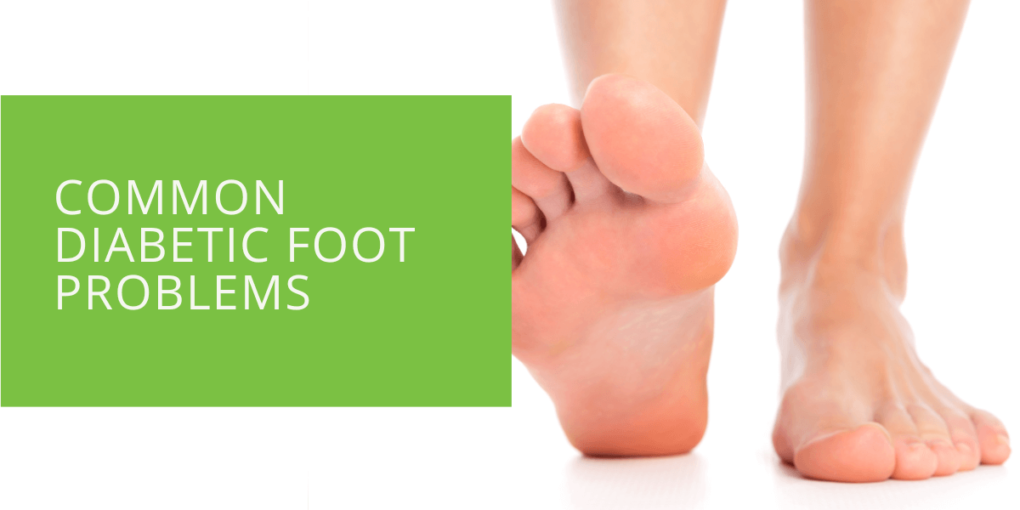Common Diabetic Foot Problems
Diabetes is a chronic medical condition that affects millions of people worldwide. It occurs when the body cannot produce enough insulin or use it properly, leading to high blood sugar levels. Over time, high blood sugar levels can cause damage to various organs in the body, including the feet.
People with diabetes are at a higher risk of developing foot problems due to nerve damage, poor blood flow, and weakened immune systems. These foot problems can range from mild to severe, leading to serious complications such as foot ulcers, infections, and even amputation.
This article will discuss common diabetic foot problems, including diabetic neuropathy, peripheral artery disease, foot ulcers, Charcot foot, and ingrown toenails. We will also provide tips for preventing and managing these foot problems to help you maintain good foot health.
Diabetic Neuropathy
Diabetic neuropathy is a type of nerve damage that can occur in people with diabetes. High blood sugar levels can damage the nerves that send signals from the feet and legs to the brain, causing loss of feeling or tingling sensations in the feet and legs. This condition is often referred to as peripheral neuropathy.
Diabetic neuropathy can lead to serious foot problems, including ulcers, infections, and amputation. People with diabetic neuropathy may not feel pain or notice foot injuries, making it difficult to detect problems early on.
To prevent diabetic neuropathy, it is important to keep your blood sugar levels under control. You should also check your feet daily for any signs of nerve damage, such as numbness or tingling. If you notice any changes in feeling in your feet, you should consult a podiatrist for further evaluation.
Prevention and Management of Diabetic Neuropathy
- Control your blood sugar levels through a healthy diet, regular exercise, and medication as your doctor prescribes.
- Check your feet daily for any changes in feeling, skin color, or temperature.
- Avoid smoking and limit alcohol consumption, as these can worsen nerve damage.
- Wear comfortable shoes that fit well, and do not rub or pinch your feet.
- Avoid walking barefoot, especially on hard or rough surfaces.
- Consult a podiatrist for regular foot exams and to discuss any concerns about your foot health.

Peripheral Artery Disease
Peripheral artery disease (PAD) is a condition that affects the blood vessels in the legs and feet. It occurs when the arteries that supply blood to the legs and feet become narrow or blocked, reducing blood flow to these areas.
PAD can cause pain, cramping, or fatigue in the legs and feet. People with PAD may also experience sores, blisters, or wounds that do not heal properly. If left untreated, PAD can lead to serious foot problems, including ulcers and infections.
To prevent PAD, you should maintain a healthy lifestyle and control your blood pressure and cholesterol levels. You should also check your feet daily for any signs of redness or sores and consult a podiatrist if you notice any changes in your feet or legs.
Prevention and Management of Peripheral Artery Disease
- Quit smoking, as smoking can worsen PAD symptoms and increase the risk of complications.
- Maintain a healthy weight through a balanced diet and regular exercise.
- Control your blood pressure and cholesterol levels through medication and lifestyle changes.
- Avoid sitting or standing for long periods, as this can reduce blood flow to the legs and feet.
- Wear comfortable shoes that fit well and provide good support.
- Consult a podiatrist for regular foot exams and to discuss any concerns about your foot health.

Foot Ulcers
A foot ulcer is a sore or wound that develops on the feet or toes. It can be caused by various factors, including poor circulation, nerve damage, and pressure on the feet from poorly fitting shoes or standing for long periods.
Foot ulcers can be serious and lead to infection or even amputation if not properly managed. People with diabetes are at a higher risk of developing foot ulcers due to nerve damage and poor blood flow to the feet.
To prevent foot ulcers, it is important to check your feet daily for any signs of injury or changes in feeling. You should also keep your feet clean and dry, avoid wearing tight or uncomfortable shoes, and protect your feet from injury.
Prevention and Management of Foot Ulcers
- Check your feet daily for any signs of injury, such as cuts, blisters, or redness.
- Wash your feet daily with mild soap and warm water, and dry them thoroughly, especially between the toes.
- Apply a moisturizer to your feet every day to prevent dryness and cracking, but avoid applying it between the toes.
- Wear comfortable shoes that fit well and provide good support.
- Protect your feet from injury by wearing shoes or slippers at all times.
- Consult a podiatrist if you notice any changes in your feet or if you develop a foot ulcer.

Charcot Foot
Charcot foot is a rare but serious foot condition that can occur in people with diabetes. It is caused by nerve damage and can lead to changes in the bones and joints of the foot.
Symptoms of Charcot foot can include swelling, redness, and deformity of the foot. If left untreated, Charcot foot can lead to serious complications, including foot ulcers, infections, and even amputation.
To prevent Charcot foot, it is important to maintain good foot hygiene and check your feet daily for any signs of injury or changes in feeling. You should also wear comfortable shoes that fit well and provide good support.
Prevention and Management of Charcot Foot
- Check your feet daily for any signs of injury or changes in feeling.
- Maintain good foot hygiene by washing and drying your feet daily.
- Wear comfortable shoes that fit well and provide good support.
- Consult a podiatrist if you notice any changes in your feet or develop symptoms of Charcot foot.
Ingrown Toenails
An ingrown toenail is a common foot problem that can occur when the edge of the toenail grows into the skin. It can be caused by various factors, including poor nail trimming, tight shoes, or injury to the toe.
Ingrown toenails can be painful and lead to infection if improperly managed. People with diabetes are at a higher risk of developing ingrown toenails due to poor circulation and nerve damage.
To prevent ingrown toenails, it is important to trim your toenails straight across and avoid cutting them too short. You should also wear comfortable shoes that fit well and not squeeze your toes.
Prevention and Management of Ingrown Toenails
- Trim your toenails straight across, and avoid cutting them too short.
- Wear comfortable shoes that fit well and do not squeeze your toes.
- Soak your feet in warm water to soften the nails, and gently lift the edge of the ingrown toenail with a clean instrument.
- Consult a podiatrist if you develop an infection or the ingrown toenail does not improve.
Conclusion
In conclusion, foot problems are common complications of diabetes, but they can be prevented and managed with proper foot care. People with diabetes should check their feet daily for any signs of injury or changes in feeling, keep their blood sugar levels under control, and consult a podiatrist regularly for foot exams.
Following the prevention and management tips outlined in this article can help prevent serious foot problems and maintain good foot health. If you notice any changes in your feet or experience foot pain or discomfort, do not hesitate to consult a podiatrist for further evaluation and treatment. Remember, taking care of your feet is important in managing diabetes and maintaining overall health and well-being.

